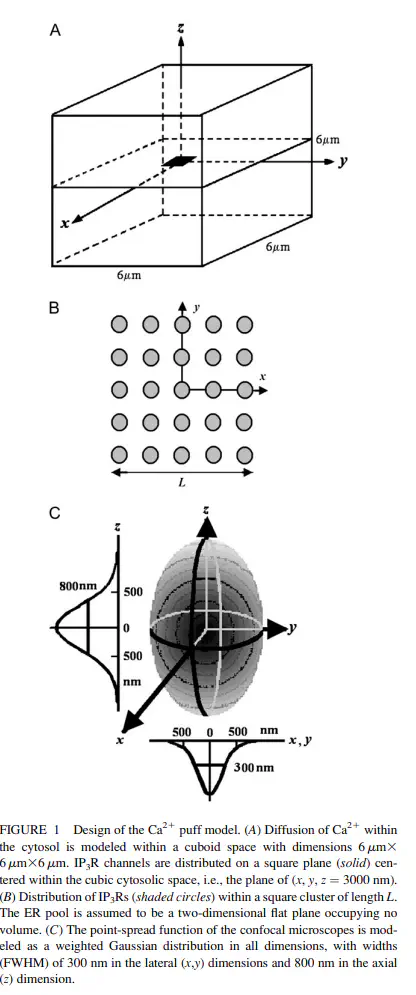The Number and Spatial Distribution of IP3 Receptors Underlying Calcium Puffs in Xenopus Oocytes

Abstract
Calcium puffs are local Ca(2+) release events that arise from a cluster of inositol 1,4,5-trisphosphate receptor channels (IP(3)Rs) and serve as a basic “building block” from which global Ca(2+) waves are generated. Important questions remain as to the number of IP(3)Rs that open during a puff, their spatial distribution within a cluster, and how much Ca(2+) current flows through each channel. The recent discovery of “trigger” events-small Ca(2+) signals that immediately precede puffs and are interpreted to arise through opening of single IP(3)R channels-now provides a useful yardstick by which to calibrate the Ca(2+) flux underlying puffs. Here, we describe a deterministic numerical model to simulate puffs and trigger events. Based on confocal linescan imaging in Xenopus oocytes, we simulated Ca(2+) release in two sequential stages; representing the trigger by the opening of a single IP(3)R in the center of a cluster for 12 ms, followed by the concerted opening of some number of IP(3)Rs for 19 ms, representing the rising phase of the puff. The diffusion of Ca(2+) and Ca(2+)-bound indicator dye were modeled in a three-dimensional cytosolic volume in the presence of immobile and mobile Ca(2+) buffers, and were used to predict the observed fluorescence signal after blurring by the microscope point-spread function. Optimal correspondence with experimental measurements of puff spatial width and puff/trigger amplitude ratio was obtained assuming that puffs arise from the synchronous opening of 25-35 IP(3)Rs, each carrying a Ca(2+) current of approximately 0.4 pA, with the channels distributed through a cluster 300-800 nm in diameter.